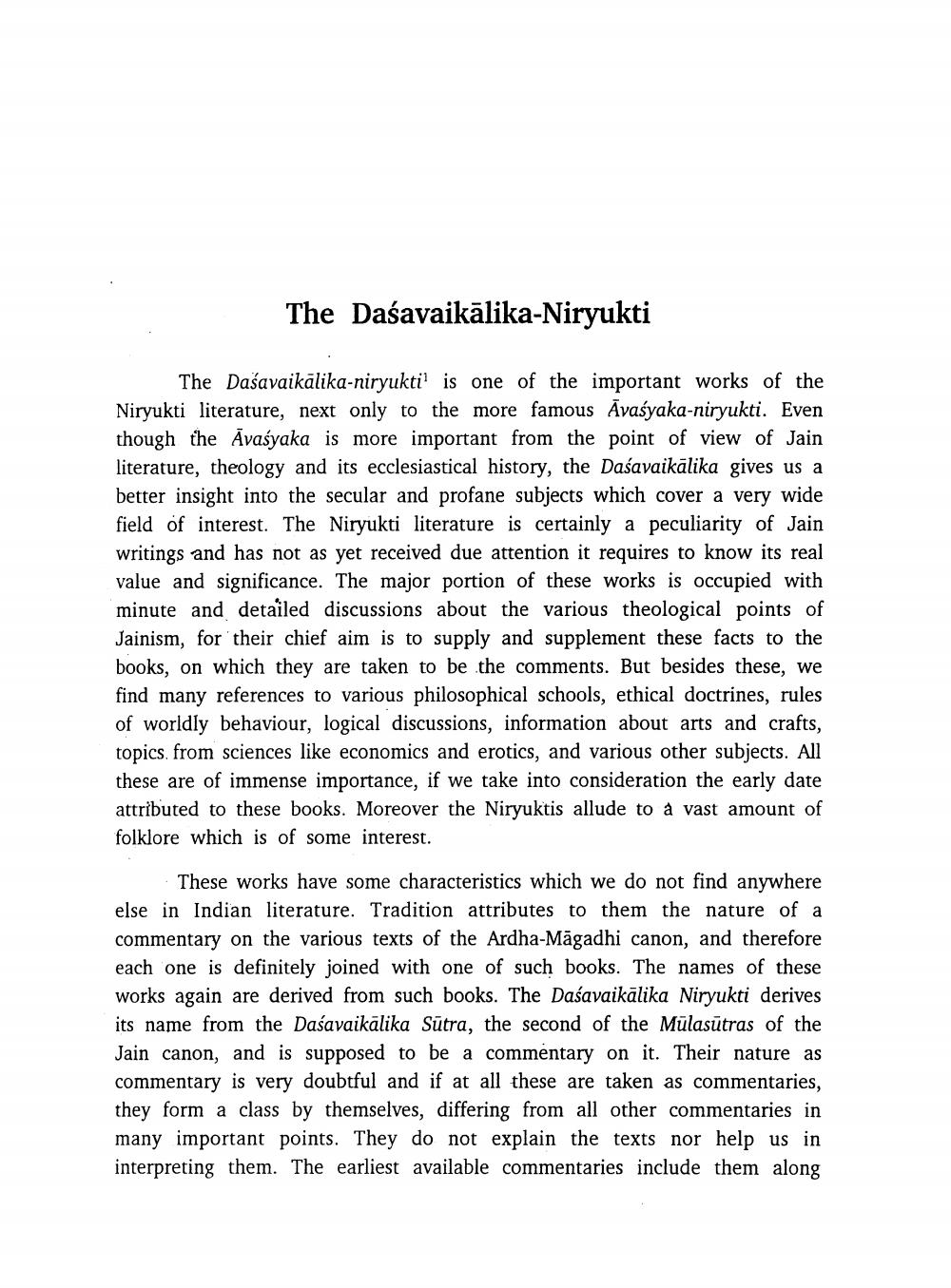________________
The Daśavaikālika-Niryukti
The Dasavaikālika-niryukti is one of the important works of the Niryukti literature, next only to the more famous Avaśyaka-niryukti. Even though the Āvaśyaka is more important from the point of view of Jain literature, theology and its ecclesiastical history, the Daśavaikālika gives us a better insight into the secular and profane subjects which cover a very wide field of interest. The Niryukti literature is certainly a peculiarity of Jain writings and has not as yet received due attention it requires to know its real value and significance. The major portion of these works is occupied with minute and detailed discussions about the various theological points of Jainism, for their chief aim is to supply and supplement these facts to the books, on which they are taken to be the comments. But besides these, we find many references to various philosophical schools, ethical doctrines, rules of worldly behaviour, logical discussions, information about arts and crafts, topics from sciences like economics and erotics, and various other subjects. All these are of immense importance, if we take into consideration the early date attributed to these books. Moreover the Niryuktis allude to a vast amount of folklore which is of some interest.
These works have some characteristics which we do not find anywhere else in Indian literature. Tradition attributes to them the nature of a commentary on the various texts of the Ardha-Māgadhi canon, and therefore each one is definitely joined with one of such books. The names of these works again are derived from such books. The Daśavaikālika Niryukti derives its name from the Daśavaikālika Sūtra, the second of the Mülasūtras of the Jain canon, and is supposed to be a commentary on it. Their nature as commentary is very doubtful and if at all these are taken as commentaries, they form a class by themselves, differing from all other commentaries in many important points. They do not explain the texts nor help us in interpreting them. The earliest available commentaries include them along




